Recycling is the process of turning used recyclable materials into new products.
Recycling helps us to reuse waste, turning them into new materials that can be manufactured into something new. This saves a lot of raw materials for future use.
With the continuously increasing population and use of disposable products and packaging, our finite natural resources are being depleted at an alarming rate.
Recycling is a way to help by conserving natural resources for the future. Let’s take a closer look at 10 benefits of recycling that make our world better!
Current US Recycling Facts
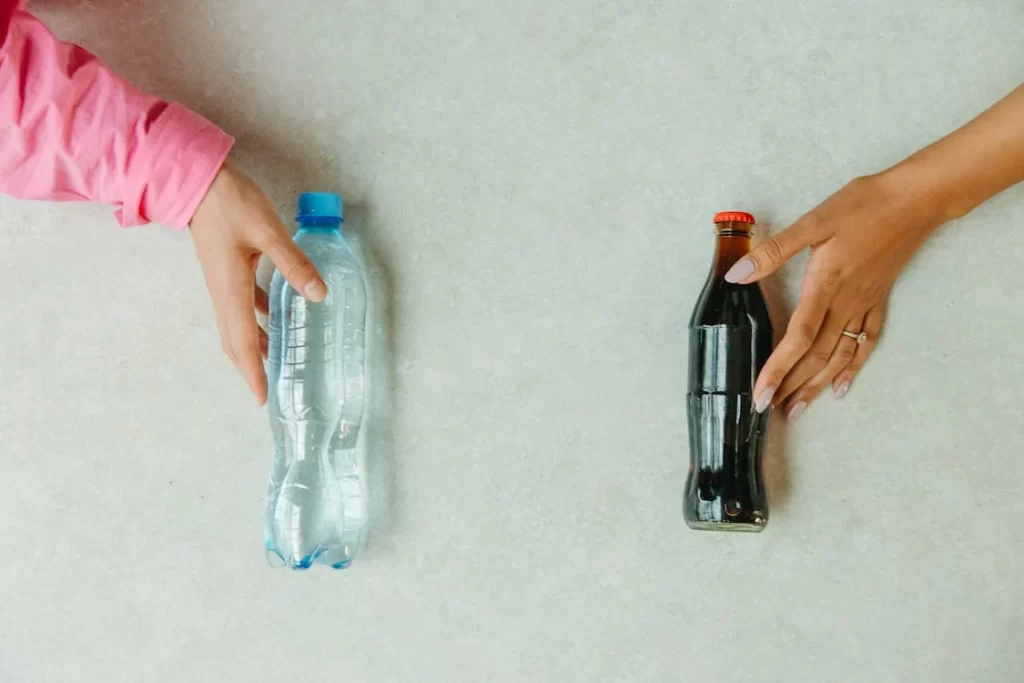
United States plastic recycling has fallen to between 5% and 6% since China, Turkey, and other countries have now banned US recyclable plastic imports.
In 2021 about 85% of recyclable plastics went to landfills while another 10% were incinerated.
These numbers are shocking and will continue to get worse as long as the United States neglects to fix the lack of domestic recycling infrastructure.
Paper recycling is going quite a bit better, depending on the material.
- Corrugated cardboard is about 96% recycled
- Newspapers are recycled at almost 65%
- Paperboard is recycled nearly 21%
- All other paper goods are recycled at about 43%
An advantage of recycling aluminum is that it can be recycled in all its forms, including clean food packaging, clean foil, and aluminum product packaging.
However, these materials are recycled at a rate of about 35%.
Aluminum cans have a much higher recycling rate, thanks in part to deposit programs in some states. Aluminum beer and soda cans are recycled about 50% of the time.
Here’s a short but fascinating video from PBS Newshour that clearly explains the problem the United States is having with recycling efficiency.
Recycling Benefits
Overall, recycling benefits include economic, environmental, and health benefits. Recycling uses a fraction of the fossil fuel energy that processing new materials uses.
If every can made in the United States was recycled it would save energy to power over 4 million homes for a full year!
This type of energy savings would reduce our need for polluting fossil fuel energy, helping to make green energy options more viable to meet our energy needs.
By recycling, we could reduce the negative impacts of using natural resources, save money, reduce pollution and waste, and create jobs, and boost the economy.
10 Benefits of Recycling for the World
- Preserves natural resources
- Prevents habitat destruction
- Creates jobs
- Economic Benefits of Recycling
- Saves energy
- Environmental Benefits of Recycling
- Preserves landfill space
- Creates a circular economy
- Preserves non-renewable materials
- Reduces greenhouse gas emissions
As we understand these benefits and help those in our communities understand these benefits it will be easier to get support for investments in recycling programs.
10 Recycling Benefits
Let’s dive a little deeper into the benefits of recycling.
1. Preserves Natural Resources
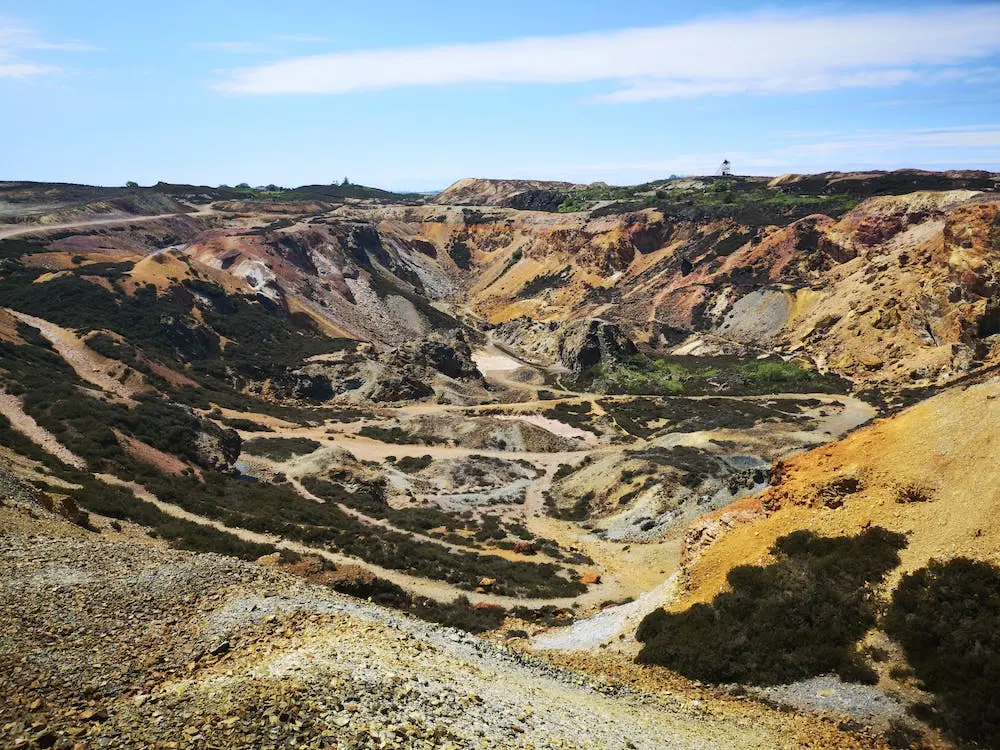
Most of the world’s natural resources are finite. They are limited and will run out at some point.
Preserving these natural resources is essential for keeping these non-renewable natural resources available for human use.
We can reduce the consumption of natural resources by using recycled materials instead of new materials to make new products and packaging.
Preventing waste through source reduction before it is generated can further reduce the need for disposal and save more resources.
An example of natural resources that can be recycled to produce a more valuable material is bimetallic cans. After the tin is recycled the metal is refined and more valuable than it was before.
2. Prevents Habitat Destruction
Mining and logging for new materials disturbs and destroy natural habitats.
- Mining for new materials like coal, copper, tin, aluminum, gold, silver, diamonds, and salt cause environmental degradation.
- Once habitats are drastically changed they usually can’t be reversed.
- Deforestation to create biomass to feed power plants can be replanted, but the animals and birds won’t be able to move back into the deforested area for decades.
- Recycling used materials helps to decrease the need to obtain raw materials.
A huge part of the benefit of recycling is that it requires so much less energy to process a material that’s already been used than to mine, crush, process, melt, and form a raw ore.
This also means that the energy saved can be used elsewhere, reducing our overall need for energy.
3. Creates Jobs
Recycling habits play an important role in the economy by ensuring waste is reused and reduced.
There are many more jobs in recycling than there are in waste management. That’s because the recycling has to be picked up, sorted, baled, and shipped.
There are different trucks and sorting machines that need maintenance and employ many skilled workers.
After the recycling process, more jobs are created for making new goods out of recycled materials.
4. Economic Benefits of Recycling
Here are the economic stats according to the most recent census data, recycling and reuse activities in the United States in 2020.
- Recycling created 682,000 jobs (a decrease since 2007)
- $37.8 billion in wages (increase since 2007)
- $5.5 billion in tax revenues (decrease since 2007)
As you can see, the tax revenues from recycling don’t come close to covering the wages of those working to process the recyclables.
This is why recycling programs charge residents for recycling services and also try to sell recyclables to recyclers who will pay for the used materials that they can turn into salable materials.
This used to be a great source of revenue for municipalities that could charge residents for recycling, enjoy tax incentives for recycling, and sell the recyclables.
Recycling was providing a great economic boon for cities that participated in recycling programs.
Since China has stopped accepting US recyclables, this process is upside down. Municipalities are losing money because they’re having to pay recyclers to haul away the recyclables they’ve spent money collecting.
As the United States invests in domestic recycling plants this process should right itself, but there is no time to lose.
As cities debate whether they should continue recycling, most of the US plastic recyclables are being put in landfill sites.
We can make a huge difference by choosing to buy reusable items made from recycled materials! We can help create a market for recycled products that inject money into the recycling system.
5. Recycling Saves Energy
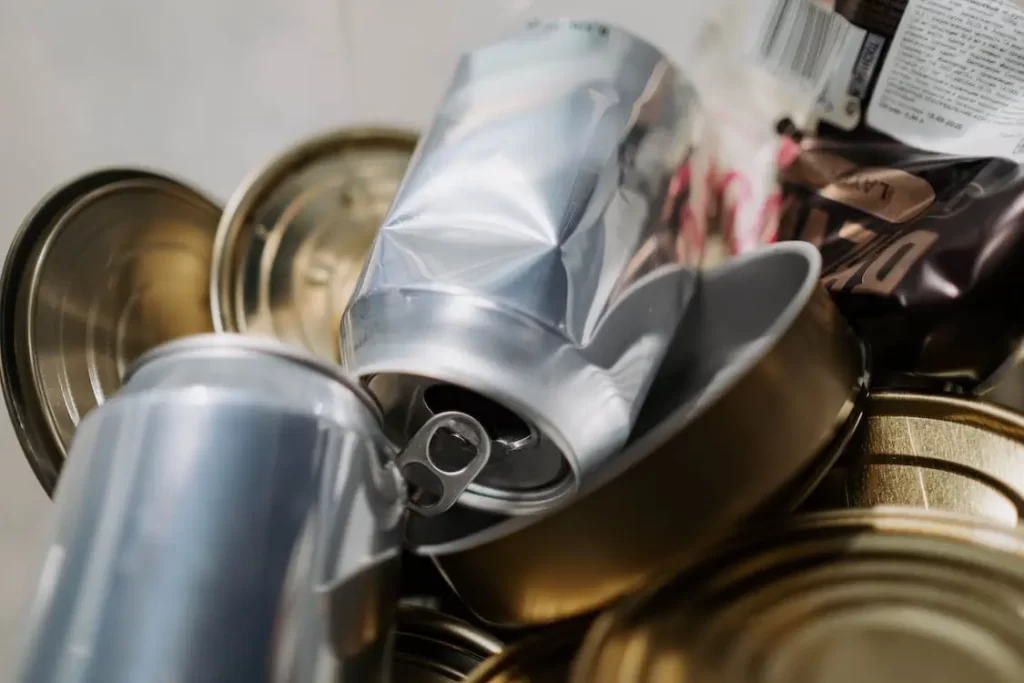
According to Stanford University, the amount of energy that is lost by throwing away recyclables such as aluminum cans and newspapers is equivalent to the annual output of 15 power plants.
Here are the savings for every one ton of recycled newsprint.
- 1.7 barrels of oil
- 7,000 gallons of water
- 4.6 cubic yards of landfill space
- 601 kilowatts of energy
- 60 pounds of air pollutants are prevented from being released into the atmosphere
Here are the savings for recycling one ton of plastic.
- 16.3 barrels of oil
- 5,774 kilowatts of energy
- 30 cubic yards of landfill space
Here are the savings for every one ton of glass that gets recycled.
- 0.12 barrels of oil
- 42 kilowatts of energy
- 2 cubic yards of landfill space
- 7.5 pounds of air pollutants are prevented from being released into the atmosphere
Recycling one glass bottle saves enough energy to power a 100-watt light bulb for 4 hours.
When you recycle aluminum, 95% of the energy required to make the same amount of aluminum from its virgin source is saved.
Recycling one ton of aluminum saves:
- 40 barrels of oil
- 14,000 kilowatts of energy
- 10 cubic yards of landfill space
Now the United States is investing in programs that are developing ways to safely recycle spent nuclear fuel so we can continue to get carbon-free electricity from nuclear power plants in the future.
6. Environmental Benefits of Recycling
Recycling habits reduce pollution because manufacturers are reusing materials instead of using raw materials.
This also saves energy and toxic chemicals and greenhouse gases aren’t being released into the atmosphere through incineration or decay at landfill sites.
By recycling hazardous waste, it is prevented from making it to the landfills where it can potentially contaminate water sources such as rainwater and flooding leeches contaminants into the drinking water.
The EPA estimates that 0.1% to 0.4% of surface aquifers are contaminated by landfills and industrial impoundments leaching metals, minerals, explosives, bacteria, viruses, and other toxic substances.
With this type of data, recycling should seem like a no-brainer.
7. Recycling Preserves Landfill Space
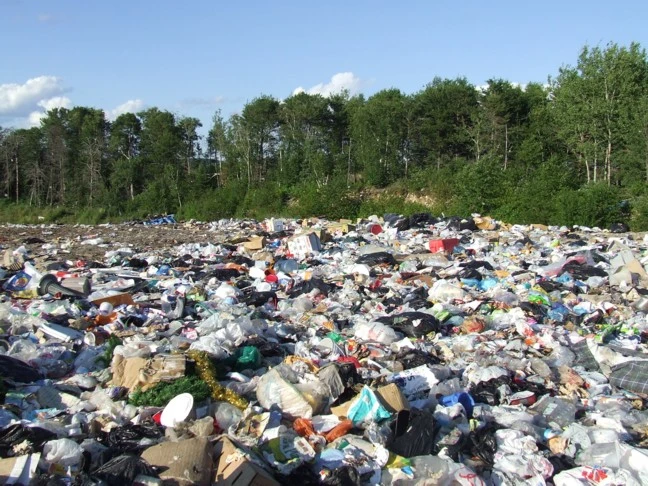
Each ton of recyclables that gets thrown into a landfill takes up anywhere from 5 to 30 cubic yards of planet earth that will be forever contaminated by garbage and chemicals.
Landfill space is necessary for true disposables, but it’s such a waste to take it up with things that we could be reusing instead of discarding.
We have to share this planet with animals, plants, and other humans while leaving room for the safe disposal of our waste.
Keeping recyclables out of the landfill system saves space for things that truly need to be thrown away.
8. Recycling Creates a Circular Economy
This could be one of the biggest benefits of recycling. It encompasses recycling, reuse, good economic policies, and consumption patterns.
Here’s how it works for something tricky like plastics.
- Not all plastics are recyclable.
- Focus is shifted to only using recyclable plastics.
- Consumers buy, use, and recycle plastic goods.
- Used plastic gets recycled into new plastic pellets.
- The plastic is purchased by a factory that uses it to make new single-use products or robust reusable products.
- The same consumers purchase new products made from recycled plastic.
- They recycle the plastic which is made again into plastic pellets.
- The cycle continues on and on, creating its own market for recycled plastic.
This type of circular market has already been established for recycling glass, aluminum, tin, iron, steel, paper, and compost. However, plastics have been harder to establish.
Plastics are unique because there are so many formulas, and while most of them have the recycling triangle on the bottom, many recycling facilities can’t process that type of plastic.
So the plastics get thrown away.
This is the main reason why China began turning away American plastic recyclables because the plastics that truly are recyclable were mixed with others that really aren’t recyclable.
It would be so helpful for establishing good recycling habits if there was a standard for plastics that decreased the number of types of plastic and eliminated non-recyclables completely.
9. Recycling Preserves Non-Renewable Raw Materials

Non-renewable raw materials are the backbone of our very existence and they’re in short supply.
We depend on gold for electronics, diamonds for electronics and cutting blades, iron for nearly all metal alloys, bauxite for aluminum cans, uranium for nuclear power, and the list goes on.
If it isn’t a resource that repopulates, replenishes, or regrows on its own, then it’s a non-renewable resource. Once we use up these resources they’re gone forever.
The problem is we know we have a limited supply of many resources, but we’re still throwing what we have in landfills around the globe.
Recycling decreases our dependence on these raw non-renewable materials so that they’ll last long into the future.
Materials like glass and aluminum can be recycled forever without losing the quality of the material! Yet we’re throwing millions of tons of it into landfills.
10. Recycling Reduces Greenhouse Gas Emissions
Greenhouse gases are the reason our atmosphere is heating up.
Greenhouse gases are emitted by burning fossil fuels, releasing refrigerants into the atmosphere, and the decay of waste.
Waste emits methane. Methane is a very toxic greenhouse gas. Landfills are notorious methane emitters, with some landfills being labeled “super emitters.”
These super emitters are the main contributors to greenhouse gases and air pollution in a given area.
Some landfills in the United States harvest methane from decaying garbage and turn it into a fuel source. This is a good idea in the interim, but it doesn’t solve the problem of too much rubbish worldwide.
Recycling is an excellent way to reduce greenhouse gas emissions.
Recycling decreases the amount of trash in landfills, but only when the population is committed to making it happen.
Waste-To-Energy Power Plants
Waste-to-energy power plants are used in Germany, Austria, and other nations committed to carbon neutrality. But are they really a good idea?
It seems magical – create all the waste you like then burn it and use the energy to power the community.
The harsh reality is that incinerating garbage releases tons of carbon dioxide, methane, and other greenhouse gases into the atmosphere.
Yes, it reduces landfill mass, and yes, it produces energy, but no, it is not clean energy. It’s very dirty energy, and it makes people feel good about the waste they generate.
Germany has relied on these waste-to-energy power plants to add to their carbon-neutrality plan, but because they’ve also reduced waste to record-low levels they’re now importing garbage to burn.
This is a short-term payoff with bad consequences for air pollution, and it’s just incinerating recyclable materials that we’ll wish we had in the future.
Expected Output of Recycling
The expected output of recycling is fresh material for manufacturing. Here are a few examples of what we expect to get from a recycling program.
- Aluminum sheets, rolls, or bars
- Paper rolls or sheets
- Gold ingots
- Silver bars
- Iron bars
- Fiber insulation
- Plastic pellets
- Recycled yarn
Basically, anything that is recycled gets turned into something that resembles a raw material. The recycled paper looks like new paper. Recycled plastic pellets look like new plastic pellets.
Recycled aluminum sheets are just as pure as virgin aluminum sheets. Recycled gold ingots are just as valuable as fresh gold ingots.
The main benefit is that it’s recovering a material that has been used and could have been lost if not for recycling industry intervention.
4 Social Benefits of Recycling

There are 4 main social benefits of recycling.
- Improved public health – communities with active recycling programs enjoy improved air quality and overall health compared to communities that don’t recycle.
- Sense of community – communities that actively recycle also seek to improve the community in other ways, engendering community pride and a sense of common goals.
- Eco-friendly businesses – communities with a strong commitment to recycling and composting enjoy a high number of eco-friendly businesses. This increases public health, community spirit, and helps keep the community clean.
- Sense of global awareness – those who look beyond their own needs to help improve the earth by recycling tend to have a wider, healthier view of the world.
These social benefits of recycling can be enjoyed anywhere. Social groups can encourage each other to raise recycling participation, decrease consumption, and invest in reusable resources.
When others in the community see this positive social action they’re more likely to get involved as well.
FAQs about Recycling Materials
Q: What are the Benefits of Recycling Electronics?
A: Electronics are full of non-renewable precious metals, plastics, and toxic materials like lithium which are in short supply in nature. Recycling recovers those materials for use in an unending cycle.
By recycling electronics we can reuse the precious metals located inside and save our dwindling supply of raw natural resources for later use.
If you want to know more about recycling e-waste, check out this article where we investigated 10 Benefits of Recycling Electronics. The benefits are environmental and economic – a win for everyone.
Q: What are the Benefits of Recycling Batteries?
A: Batteries have many different components that are recyclable. Many of these components, like lead, are also toxic waste that shouldn’t be placed in a landfill anyway.
Many of these recyclable materials, like lithium, are being heavily relied upon for car batteries and other small high-capacity batteries. We face a real possibility of running out of lithium and other metals.
There are 6 huge benefits of recycling batteries, but the main benefit is the recovery of rare materials like lithium.
Recycling has to become standard practice for these materials if we want to have any hope of sustaining the EV revolution.
Q: What are the Benefits of Recycling Clothing and Textiles?
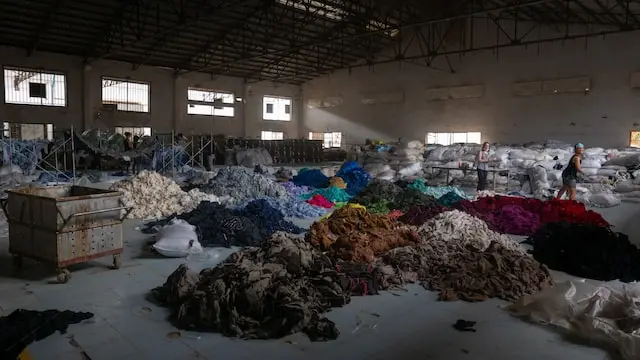
A: Natural fibers can be cleaned, carded, and spun into new yarn. If the fibers are too short they can be used as fiberfill and fiber insulation.
Synthetic fibers can simply be sorted, melted, and made into new plastic pellets that can be extruded into yarns for new polyester fiber.
In the case of synthetic materials, the recycling process can happen over and over!
Learn everything you need to know about the Benefits of Recycling Clothes and Textiles in our full guide!
Q: What are the Benefits of Recycling Steel?
A: For every ton of steel recycled, 40 pounds of limestone, 1,000 pounds of coal, and 2,500 pounds of iron ore are saved.
Those savings represent a decrease in air pollution, soil degradation, energy use, fossil fuel use, and savings of natural resources for the future.
There’s more to be said about recycling steel. Read here to discover the 4 Huge Benefits of Recycling Steel.
Q: What are the Benefits of Recycling Paper?
A: Paper recycling plays a direct role in the preservation and biodiversity of forests, by lowering the demand for wood.
Depending on what the paper is used for, it can be recycled 4 to 8 times before the fibers are too short to be reused without mixing in new fibers.
Still, when you think about a single sheet of paper having 5 or 6 lives from printer paper, cardboard, paperboard, and egg cartons, that is a long lifespan!
Check out our in-depth article, Top 7 Benefits of Recycling Paper to get the facts you need to know about paper recycling.
That’s a lot of trees saved.
Final Thoughts
Recycling doesn’t stand alone in the list of things we must do to preserve our planet. We also have to focus on waste reduction and ending consumerism.
However, supporting the recycling industry is a simple place to start.
Begin by becoming active in your community. Help others to lobby for recycling by sharing the benefits of recycling within your town. Once people know they’re more likely to participate.
What are your ideas about recycling? Let us know in the comments below!
